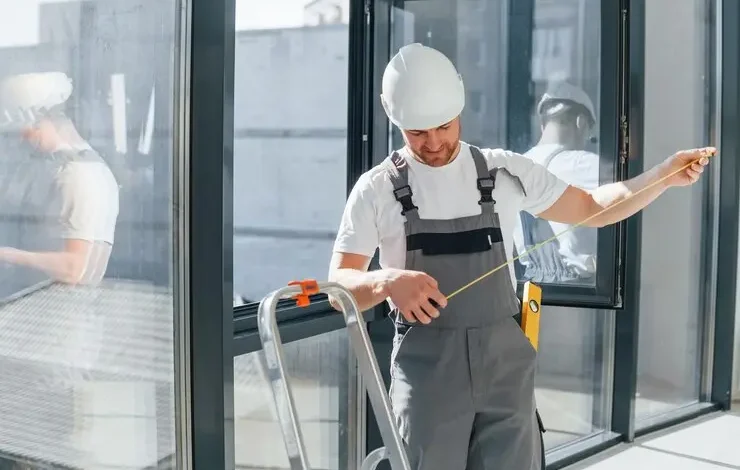Restoring Functionality and Style: A Complete Guide to Sliding Glass Door Repair

Sliding glass doors are a beautiful and functional addition to any home, offering natural light, space-saving access to patios or backyards, and a seamless connection between indoor and outdoor living. However, like any mechanical system with moving parts, sliding glass doors can deteriorate over time. From jammed tracks and faulty rollers to cracked glass and frame damage, the need for sliding glass door repair can arise in both old and relatively new doors.
In this article, we will explore the common issues homeowners face with sliding glass doors, how to troubleshoot problems, and the best practices for repairing or replacing components. Whether you’re dealing with a door that won’t slide smoothly or you’re looking to improve the security and insulation of your entryway, this comprehensive guide will help you understand the repair process and make informed decisions.
Understanding the Anatomy of a Sliding Glass Door
Before diving into repairs, it helps to understand how sliding glass doors are constructed. A typical door consists of:
- Glass panels: Usually made of tempered or laminated safety glass.
- Door frame: Often aluminum, vinyl, or wood; supports the glass and holds the sliding mechanism.
- Tracks: Horizontal rails at the top and bottom that guide the door’s movement.
- Rollers: Wheels attached to the bottom of the door that allow it to glide along the track.
- Weatherstripping: Rubber or felt seals to keep out drafts, moisture, and insects.
- Locks and handles: Provide security and accessibility.
When any of these components wear out, are misaligned, or get damaged, the door may stop functioning properly.
Common Issues That Require Sliding Glass Door Repair
1. Difficult or Stuck Sliding
One of the most frequent complaints from homeowners is a door that’s hard to slide. This can be caused by:
- Dirt or debris clogging the track
- Worn or damaged rollers
- Misaligned tracks
- Warped door frames due to moisture or temperature fluctuations
Solution: Clean the tracks thoroughly and check the rollers. Sometimes, a simple cleaning and lubrication can restore smooth motion. If the rollers are corroded or broken, they may need replacing.
2. Broken or Cracked Glass
Glass panels can crack or shatter due to impact, temperature stress, or manufacturing flaws. Though the glass in these doors is usually tempered, which makes it safer by breaking into small chunks, it’s still a safety and insulation concern.
Solution: Replacing the glass pane is a delicate task and usually best left to professionals. Measurements must be exact, and the right type of safety glass must be used to maintain door integrity.
3. Drafts and Water Leaks
If your sliding door allows air or water in, it could be due to:
- Deteriorated weatherstripping
- Improper door alignment
- Warped or damaged frames
Solution: Inspect and replace the weatherstripping. Make sure the door is properly aligned and seated in its frame. Addressing frame warping may involve more extensive repairs or even partial replacement of the frame.
4. Faulty Locks and Handles
Over time, the locking mechanism and door handles may loosen, rust, or break, compromising the security of your home.
Solution: Replace the lock or handle with a compatible part. Ensure it fits securely and test it thoroughly. There are many aftermarket locks available that offer enhanced security features.
DIY vs Professional Sliding Glass Door Repair
Many sliding glass door problems can be resolved with DIY techniques. Cleaning tracks, lubricating rollers, or replacing simple hardware components are within the reach of most homeowners. However, when dealing with glass replacement, structural issues, or significant frame damage, hiring a professional is often the safest and most efficient choice.
DIY Repairs May Include:
- Cleaning and lubricating tracks
- Adjusting or replacing rollers
- Installing new weatherstripping
- Tightening or changing locks
Professional Repairs May Be Needed For:
- Glass panel replacement
- Frame realignment
- Major track or roller damage
- Custom or high-end sliding door systems
Tools and Materials Needed for Basic Repairs
If you decide to take on some of the repairs yourself, here’s a list of basic tools and materials you might need:
- Screwdrivers (Phillips and flathead)
- Pliers
- Allen wrench set
- Vacuum and brush for cleaning tracks
- Silicone-based lubricant
- Replacement rollers or weatherstripping
- Safety gloves and glasses
- Measuring tape
Always make sure to consult your door’s manufacturer guidelines before performing repairs, especially when it comes to component compatibility.
Step-by-Step: How to Replace Sliding Door Rollers
One of the most common repairs is replacing the door rollers. Here’s a basic overview of how to do it:
- Remove the door: Open the door halfway, lift it up into the top track, and pull the bottom out. You may need help due to the weight of the glass.
- Lay the door flat: Place it on a padded surface to avoid scratching or breaking the glass.
- Locate and remove rollers: Typically, rollers are held in by screws at the bottom of the door frame. Remove them carefully.
- Install new rollers: Match the replacement rollers with the old ones. Slide them into place and secure them with screws.
- Reinstall the door: Carefully lift and place the door back into the frame, aligning it with the top and bottom tracks.
- Test and adjust: Slide the door back and forth. Use a screwdriver to adjust the roller height if needed for a smoother glide.
Preventative Maintenance Tips
Regular maintenance can extend the lifespan of your sliding glass door and reduce the frequency of repairs. Here’s how to keep your door functioning smoothly year-round:
- Clean the tracks monthly to prevent debris buildup.
- Lubricate rollers and locks with silicone spray twice a year.
- Inspect weatherstripping annually and replace when worn.
- Check for drafts or rattling, especially after storms or temperature swings.
- Avoid slamming the door, which can damage the frame and rollers.
When It’s Time to Consider a Replacement
While sliding glass door repair can solve many problems, there are situations when replacing the entire door might be more cost-effective or necessary:
- Frequent, recurring issues that indicate deeper structural problems
- Outdated models that lack energy efficiency or security features
- Severe damage from storms, accidents, or aging
- Renovation or remodeling where the door design no longer fits
Modern sliding doors come with features like double or triple glazing, built-in blinds, and advanced locking systems. If you’re experiencing constant trouble, an upgrade might be the smarter long-term investment.
Cost Considerations
The cost of sliding glass door repair varies widely depending on the nature of the problem:
- Roller replacement: $50–$150 (DIY), $100–$300 (pro)
- Glass replacement: $200–$600 or more
- Track repair: $100–$250
- Complete door replacement: $800–$2,500+
Always get quotes from multiple contractors, and ensure they are licensed and insured before hiring.
Final Thoughts
Maintaining a functional sliding glass door enhances not only the aesthetic appeal of your home but also its security, insulation, and convenience. Whether you’re handling a simple roller fix or coordinating a full glass replacement, understanding the components and repair process can save you time, money, and frustration.
The good news is that most issues are manageable with a little knowledge and the right tools. But when the problem extends beyond basic fixes, don’t hesitate to call a trusted professional for proper sliding glass door repair. Investing in timely maintenance and repairs ensures your door continues




